#organic social
Explore tagged Tumblr posts
Text
I'm trying to picture the meeting where this video was shown to the client
This seems like a desperate roll of the dice to refresh an ailing brand. But Nutter Butter is the #6 best selling cookie in the US.
It's totally bizarre, but I love it. And it's probably the first time in a long time the brand got this much attention on Reddit or BroBible.
#ads#advertising#adverts#creative advertising#advertising education#video advertising#nutter butter#mondelez#social media ad#organic social
5 notes
·
View notes
Text
Activism is not cold-calling.
Activism is not cold-calling, and this is critically important to understand.
I'm seeing a lot of posts on here about 'building bridges' and 'finding community,' and then (extremely valid) response posts saying "BUT HOW??" And I'm going to explain something that can be very counter-intuitive: there is strategy involved in community.
As a longtime volunteer labour organizer, I’ve taken and taught many trainings on the strategy of talking. Something that surprises a lot of people is the very first thing you do in a union campaign. You sit down with your organizing committee, take out pen and paper, and literally map it out. You draw a physical map of the workplace: where are the entrances, exits, break rooms, supervisor offices. Essentially, ‘where is it safe to have a union conversation.’ Then you draw another physical chart of your coworkers. You sort out who is union-friendly, openly hostile to unions, or somewhere in the middle, and then you plan out very deliberately and carefully who talks to whom and in what order.
Consider: If Vocally Leftist Jane walks up to Conservative David and says "hey what do you think about unions," David is going to shut down immediately. He's not inclined to listen to Jane. But if Jane talks to Moderate Jason and brings him into the fold, then Jason is a far more effective strategic choice to talk to David, and David may actually hear him out without an instant reaction.
IMPORTANT CAVEAT: If Conservative David turns out to be Alt-Right David, and could be dangerous to follow organizers, we write him off. We are not trying to reach Alt-Right David. We are trying to reach Conservative David, who may actually be persuaded to find solidarity with other employees as fellow workers. Jason is a safe scout to find out which one he is. It does no one any good if Leftist Jane (or even Moderate Jane who is a visible minority) talks to Alt-Right David and puts herself on his radar. Not only has she done nothing to convince Alt-Right David to join a union - she's probably actively turned him against the idea - but now she's also in danger and the entire campaign is at risk. NOBODY WANTS THIS. Jane was NOT a hero for doing this. The organizing committee was foolish and enacted a terrible strategy to everyone's detriment.
Where you can make a difference is with people who will listen to you. You having a conversation with your well-meaning but clueless Centrist Democrat Auntie, and maybe gently helping her understand some things the media has been glossing over, is way more strategically useful than you marching up to MAGA Neighbour You've Met Once and trying to "build community" or "understand" them. They don't care. They're impervious, dangerous, and cruel. But maybe your beloved auntie will think about what you said, and then talk to her friend Anna who IDs as "fiscally conservative" but didn't vote because she can't bring herself to get on board with Trump. Then perhaps Anna talks to her brother Nic who has MAGA leanings but isn't all the way there yet. Proto-MAGA Nic would not have listened to you, nor would he have listened to Centrist Democrat Auntie, but he might absorb some of what his sister is saying.
This is not a cop-out or an echo chamber. This is you spending your time and energy strategically and safely. You are not a useful activist to anyone if you’re dead. Anyone who is telling you to hurl yourself directly at MAGA assholes like cannon fodder has no understanding of the strategy behind community building, and you should feel comfortable writing them off.
Last point: If you are tired, emotionally devastated, and/or in danger: take a break. This post is for people who would feel better jumping into action, not for people who are too overwhelmed to even think about it right now. You are worth so much even if you’re not actively Doing Activism, and your rest is worth more than “a break period so you can recharge and Do More Activism.” We all deserve the individual dignity of being worthy of comfort, rest & safety just on the basis of being human, outside of whatever we're doing for others' benefit. To deny ourselves that dignity is to devalue ourselves, and that’s the absolute last thing any of us should be doing right now.
24K notes
·
View notes
Text
ORGANIC REACH OR PAY-TO-PLAY
The digital town square has changed. Remember when a simple post could reach a huge chunk of your followers? Those days feel like a distant memory. Now, the algorithms act like gatekeepers, and it seems like everyone's shouting for attention. Organic reach has become a whisper, and "pay-to-play" is the dominant language. But is throwing money at these platforms really worth it?
The answer is a resounding yes—but only if you're smart about it. It's not about blindly boosting posts; it's about strategic investment. Think of it less like gambling and more like precision targeting. You can pinpoint your ideal customer with incredible accuracy, reaching them based on their interests, behaviors, and even past interactions with your brand. This level of control means you're not wasting resources on people who'll never be interested.
Paid social media isn't just about blasting a message to the masses; it's about building connections. It lets you expand your reach far beyond your existing followers, introducing your brand to potential customers you might never have reached organically. And the best part? You can track everything. From clicks and views to actual sales, the data is there, allowing you to fine-tune your campaigns and see exactly what's working.
Forget generic ads. Today's paid social offers a diverse toolbox. Think eye-catching videos, interactive polls, and immersive experiences that grab attention and leave a lasting impression. It's about crafting compelling stories that resonate with your audience and make them want to learn more. It's not just advertising; it's storytelling.
So, while the social media landscape may look different than it did a few years ago, the potential is still there. It's about adapting, learning the new rules of the game, and using paid social media strategically to amplify your message, connect with your audience, and achieve your business goals. It's not just about paying to play; it's about playing to win.
#ORGANIC SOCIAL#ORGANIC SOCIAL MEDIA#PAID SOCIAL MEDIA#seo#Predrag Petrovic#AI SEO#AI SEO EXPERT#AI MARKETING AGENCY#SEO EXPERT EMEA#AI SEO SPECIALIST#AI SPECIALIST
1 note
·
View note
Text
man. People get so upset when you call things social constructs. Thinking that if you say something is a social construct that means it's fake and unnatural, and following that, that that means it’s bad. Something being a social construct means that it’s socially constructed. That’s it.
Money is a social construct. Weekends are a social construct. Vegetables are a social construct.
That doesn’t mean it’s okay if my paycheck is withheld or my rent is late. Doesn’t mean I don’t luxuriate in sleeping in on Saturday. Doesn’t mean the nutrients in tomatoes or spinach aren’t good for you.
What it means is that the way we think about things is socially constructed, and could be constructed a different way. Why do we base our society around money? What does value mean outside of money? What is “value”? The way we construct it isn’t the only possible way.
Why is a week a cycle of seven days, and five of those days are for working and two of those days are for resting? Could we organize our time differently? Should we? What would that look like? Other cultures don’t/didn’t have seven-day weeks with a five on-two off cycle. It’s not inevitable. It’s historically and culturally specific.
“Fruit” has a scientific definition but “vegetable” does not. Many parts of plants are culinarily defined as vegetables. Fruits (eggplant, avocado, tomato), stems (celery, asparagus), leaves (kale, lettuce), roots (carrots, potatoes, turnips)… all of these are culturally categorized as vegetables. And nutrition advice is based on this cultural categorization. Is a mushroom a vegetable? It’s not even a plant! Why do we categorize it this way? Why isn’t wheat or oats considered vegetables, but corn is, except when it isn’t? Could we categorize our plant-based food other ways?
Calling these social constructs doesn’t mean they’re bad or unimportant. It just calls attention to the fact that they aren’t inevitable. That they could be constructed in different ways, and that is worth thinking about, and thinking about the value we get in constructing things the way we do.
Gender is a social construct.
Romance is a social construct.
They are based on feelings, desires, and experiences, but how we name and categorize and express and act on them are fully culturally constructed. Other cultures do and have constructed these concepts in other ways. You can like the way we do it now. You can find it stifling. But the way we do it now is not the only, inevitable, inherent, real way. It could be done other ways, organized and categorized and conceptualized in other ways. And that’s not a bad thing either.
#Social constructs aren’t bad. They’re how we understand and organize the world#But they aren’t inherent inevitable and immoveable either#Social constructs
5K notes
·
View notes
Text

#alt text#art#feminism#feminist#martin luther king jr#mlk day#mlk jr#anti fascist#social justice#organizing#politics
1K notes
·
View notes
Text
Australian Social Media News
Australia has passed a law that bans anyone under age 16 from using social media starting late 2025, fining tech companies up to A$49.5M for non-compliance. While intending to address mental health concerns in kids and teenagers, the law raises significant risks for privacy, digital access, and the freedom of expression, raising questions about the boundaries of digital censorship.
With that being said, we don’t expect this decision to affect the OTW or any of its projects, including AO3. However, as the OTW, we are against all forms of censorship and will be releasing a detailed statement about the matter soon.
https://www.reuters.com/technology/australia-passes-social-media-ban-children-under-16-2024-11-28/
#aus news#australia#organization for transformative works#otw#archive of our own#ao3#AO3 is not social media so it should not be affected#but we are watching things anyway#and this is your reminder that it is ALWAYS a good idea to download fics you love
2K notes
·
View notes
Text
Black Panther Party member Kathleen Cleaver on non-violence. [source]
Non-violence is a very non-functional approach in a society that's based entirely on organized force and violence. A country that was created in violence, land was taken in violence, a society that's perpetuating itself through violence in the ghettos, in Vietnam, in Africa. Wherever you look, there is organized force and violence at work to maintain this society. There is a world of difference between 20 million unarmed people, and 20 milion people organized and armed to the gills. That's Power.
#kathleen cleaver#bpp#black panther party#black pathers#non-violence#video#communism#violence#usa#socialism#organizing
5K notes
·
View notes
Text
Something people kinda don’t get about the way activism has changed over time is that people can’t really get arrested like they used to. I talk to old activists and they are like “oh yeah, I got arrested like 30 times that year”. Nowadays, you’d be left there to rot after like the third arrest, and that’s if you are really privileged! For a lot of folks, it’s the first arrest. But even just a lot of more “normal” old people got arrested a lot at some point in their youth and let out.
Sentencing and everything has gotten so hard on folks that you just can’t really take the risks you could then. And social services are so weak that there’s nothing to fall back on. Many of the panthers and folks were on welfare, and now you ain’t gonna get a welfare check at all.
So when you look at the movements of the sixties and try to mirror their tactics and their ferver and wonder why folks don’t show up and things don’t go down the same, just consider that these things are really different now. And what you do might got to be pretty different too.
#anarchy#activism#rose baker#anarchism#socialism#organizing#protests#welfare#arrests#prison#abolition
681 notes
·
View notes
Text
everything is awful right now so im making a 4 year survival plan, put in the tags any ideas you have
my ideas so far:
trust self & focus on values
get new copies of govt. papers
medical history binder
avoid self censorship
get high quality masks
research where my data is being shared
care for body as if theres already no healthcare
buy condoms
make sure vaxxes are up to date
self defense classes
renew passport
reblogs for a bigger idea pool would be very appreciated
don't kill yrself im so serious that is exactly what the government wants you to do stay alive out of spite even if yr miserable (& you will be) (joy exists in and amongst grief)
#excess tags 4 outreach#american politics#fuck trump#tiktok ban#trans community#lgbtq community#community building#socialism#organizing#organization#solidarity#anti capitalism#classism#late stage capitalism#end stage capitalism#politics#mutual aid#important#important post#boosting#boost#signal boost#us politics
436 notes
·
View notes
Text
PSA: Please don’t ask participants to do grounding/mindful/somatic/etc practices at your events
Grounding exercises should not be an activity in large group settings, especially unsolicited and without warning, especially if you’re not aware of every single person in the space’s mental health conditions, physical health conditions, and personal relationship to their body.
Practices such as mindfulness, grounding, somatic exercises, breathing techniques, body scans, etc. are very helpful therapeutic tools to help manage stress. They can (and do!) help plenty of people– when taught safely and used effectively!
HOWEVER for people with conditions that cause psychosis and/or dissociative conditions such as depersonalization/derealization, these techniques are contraindicated and can make their symptoms significantly worse. They should only be used with guidance from their mental health team and adapted to their needs. For people with conditions like anxiety and PTSD, being aware of breathing can trigger a trauma response or anxiety attacks.
And for people with conditions that cause chronic pain or other uncomfortable bodily sensations, becoming re-centered with their bodies can cause more awareness of the pain they are in, which a level of (ideally functional) dissociation is actually helpful. For people in wheelchairs and powerchairs, touching the ground beneath their feet isn’t always an option. For people with cardiac and pulmonary conditions, deep breathing can be impossible or can trigger asthma attacks. For disabled people in general, doing body scans can be impossible due to paralysis or limb differences. They can bring awareness to things the person wasn’t aware were wrong to begin with (which is helpful in certain spaces, but not a great ice breaker at a retreat!)
And for trans people, binders and other garments can restrict breathing, and taking repeated deep breaths while binding can cause rib damage (which is why you shouldn't bind at night, while coughing from sickness, while exercising, etc). Becoming centered in a body that makes you dysphoric can be deeply distressing, again, a level of functional dissociation helps.
This also goes for plenty of other people in marginalized bodies, such as people of color, people who use substances, queer people, and more. Becoming grounded in your own marginalized body can be a heavy weight to carry, and needs appropriate and individualized care to be a beneficial experience.
As an alternative, I suggest doing a round of gratitudes instead, it allows for people to choose their level of vulnerability in spaces, while not being generally contraindicated for many people. Doing fun (and appropriate to the setting) icebreakers are great. Ask what brings someone to the space. Check-ins about basic needs such as if people need to use the restroom, eat, drink water, are rested, etc. can be more appropriate body check-ins for folks to do.
I don’t recommend doing these exercises even with a warning beforehand. If I'm in the room while someone is leading a breathing exercise, even if I try to ignore it, I (and most people) would automatically become aware of my breathing. The same goes for any other techniques. These techniques can cause real, life-threatening levels of harm for some people, and can even just be deeply uncomfortable or distressing for others. Dissociation is not inherently evil or bad or harmful. It is the way the body and mind naturally respond to adverse experiences (note: it can also cause distress and at higher levels, can be disordered) it is best to allow people to exist as they are in communal spaces. Let people show up as they are.
Most spaces are not equipped or appropriate to respond to emergencies, difficult feelings, and all the varied responses that can come from folks doing mindfulness in group settings.
I personally do some things before large gatherings and events to feel centered on the activity I’ll be doing, and afterward, I decompress. Encourage participants to lean on their natural supports and offer suggestions for it! Be creative in your caring!
This also doesn’t mean to discourage these practices! If you see someone doing deep breathing, check in with them, offer a space for them to decompress, care for them! Worksheets or posters on techniques like square breathing and 5 senses check-ins are great for a quiet room or spaces where participants can decide if they want/are able to engage with those tools. It should be a fully consensual opt-in, rather than being forced to opt-out. Having to leave a room when a group leader says “We’re going to start a mindful breathing meditation, please feel free to leave if you have psychosis, chronic pain, or are trans” is obviously othering and outs people.
Sincerely, someone who has psychotic symptoms, dissociation, chronic pain, is trans and whose body is marginalized in many ways and is really tired from trying to explain this at every event I go to
#chronically couchbound#disability#disabled#community organizing#social justice#activism#grounding#trans#dissociation#chronic pain#bipoc#meditiation#somatic movement#somatic therapy#deep breathing#5 senses check in#boundaries#community care#protests#resistance#psychosis#psychotic disorders#actually psychotic#depersonalization#chest binding#asthma#mindfullness#mindfulness#mindfulmeditation#mindfulbreathing
744 notes
·
View notes
Text


Turbulent times are upon us. Already, blockades, demonstrations, riots, and clashes are occuring regularly. It’s past time to be organizing for the upheavals that are on the way.
But getting organized doesn’t mean joining a pre-existing institution and taking orders. It shouldn’t mean forfeiting your agency and intelligence to become a cog in a machine. From an anarchist perspective, organizational structure should maximize both freedom and voluntary coordination at every level of scale, from the smallest group up to society as a whole.
You and your friends already constitute an affinity group, the essential building block of this model. An affinity group is a circle of friends who understand themselves as an autonomous political force. The idea is that people who already know and trust each other should work together to respond immediately, intelligently, and flexibly to emerging situations.
This leaderless format has proven effective for guerrilla activities of all kinds, as well as what the RAND Corporation calls “swarming” tactics in which many unpredictable autonomous groups overwhelm a centralized adversary. You should go to every demonstration in an affinity group, with a shared sense of your goals and capabilities. If you are in an affinity group that has experience taking action together, you will be much better prepared to deal with emergencies and make the most of unexpected opportunities.
This guide is adapted from an earlier version that appeared in our Recipes for Disaster: An Anarchist Cookbook.
Affinity Groups are Powerful
Relative to their small size, affinity groups can achieve a disproportionately powerful impact. In contrast to traditional top-down structures, they are free to adapt to any situation, they need not pass their decisions through a complicated process of ratification, and all the participants can act and react instantly without waiting for orders—yet with a clear idea of what to expect from one another. The mutual admiration and inspiration on which they are founded make them very difficult to demoralize. In stark contrast to capitalist, fascist, and socialist structures, they function without any need of hierarchy or coercion. Participating in an affinity group can be fulfilling and fun as well as effective.
Most important of all, affinity groups are motivated by shared desire and loyalty, rather than profit, duty, or any other compensation or abstraction. Small wonder whole squads of riot police have been held at bay by affinity groups armed with only the tear gas canisters shot at them.
The Affinity Group is a Flexible Model
Some affinity groups are formal and immersive: the participants live together, sharing everything in common. But an affinity group need not be a permanent arrangement. It can serve as a structure of convenience, assembled from the pool of interested and trusted people for the duration of a given project.
A particular team can act together over and over as an affinity group, but the members can also break up into smaller affinity groups, participate in other affinity groups, or act outside the affinity group structure. Freedom to associate and organize as each person sees fit is a fundamental anarchist principle; this promotes redundancy, so no one person or group is essential to the functioning of the whole, and different groups can reconfigure as needed.
Pick the Scale That’s Right for You
An affinity group can range from two to perhaps as many as fifteen individuals, depending on your goals. However, no group should be so numerous that an informal conversation about pressing matters is impossible. You can always split up into two or more groups if need be. In actions that require driving, the easiest system is often to have one affinity group to each vehicle.
Get to Know Each Other Intimately
Learn each other’s strengths and vulnerabilities and backgrounds, so you know what you can count on each other for. Discuss your analyses of each situation you are entering and what is worth accomplishing in it—identify where they match, where they are complentary, and where they differ, so you’ll be ready to make split-second decisions.
One way to develop political intimacy is to read and discuss texts together, but nothing beats on-the-ground experience. Start out slow so you don’t overextend. Once you’ve established a common language and healthy internal dynamics, you’re ready to identify the objectives you want to accomplish, prepare a plan, and go into action.
Decide Your Appropriate Level of Security
Affinity groups are resistant to infiltration because all members share history and intimacy with each other, and no one outside the group need be informed of their plans or activities.
Once assembled, an affinity group should establish a shared set of security practices and stick to them. In some cases, you can afford to be public and transparent about your activities. in other cases, whatever goes on within the group should never be spoken of outside it, even after all its activities are long completed. In some cases, no one except the participants in the group should know that it exists at all. You and your comrades can discuss and prepare for actions without acknowledging to outsiders that you constitute an affinity group. Remember, it is easier to pass from a high security protocol to a low one than vice versa.
Make Decisions Together
Affinity groups generally operate on via consensus decision-making: decisions are made collectively according to the needs and desires of every individual involved. Democratic voting, in which the majority get their way and the minority must hold their tongues, is anathema to affinity groups—for if a group is to function smoothly and hold together under stress, every individual involved must be satisfied. Before any action, the members of a group should establish together what their personal and collective goals are, what risks they are comfortable taking, and what their expectations of each other are. These matters determined, they can formulate a plan.
Since action situations are always unpredictable and plans rarely come off as anticipated, it may help to employ a dual approach to preparing. On the one hand, you can make plans for different scenarios: If A happens, we’ll inform each other by X means and switch to plan B; if X means of communication is impossible, we’ll reconvene at site Z at Q o’clock. On the other hand, you can put structures in place that will be useful even if what happens is unlike any of the scenarios you imagined. This could mean preparing resources (such as banners, medical supplies, or offensive equipment), dividing up internal roles (for example, scouting, communications, medic, media liaison), establishing communication systems (such as burner phones or coded phrases that can be shouted out to convey information securely), preparing general strategies (for keeping sight of one another in confusing environments, for example), charting emergency escape routes, or readying legal support in case anyone is arrested.
After an action, a shrewd affinity group will meet (if necessary, in a secure location without any electronics) to discuss what went well, what could have gone better, and what comes next.
Tact and Tactics
An affinity group answers to itself alone—this is one of its strengths. Affinity groups are not burdened by the procedural protocol of other organizations, the difficulties of reaching agreement with strangers, or the limitations of answering to a body not immediately involved in the action.
At the same time, just as the members of an affinity group strive for consensus with each other, each affinity group should strive for a similarly considerate relationship with other individuals and groups—or at least to complement others’ approaches, even if others do not recognize the value of this contribution. Ideally, most people should be glad of your affinity group’s participation or intervention in a situation, rather than resenting or fearing you. They should come to recognize the value of the affinity group model, and so to employ it themselves, after seeing it succeed and benefiting from that success.
Organize With Other Affinity Groups
An affinity group can work together with other affinity groups in what is sometimes called a cluster. The cluster formation enables a larger number of individuals to act with the same advantages a single affinity group has. If speed or security is called for, representatives of each group can meet ahead of time, rather than the entirety of all groups; if coordination is of the essence, the groups or representatives can arrange methods for communicating through the heat of the action. Over years of collaborating together, different affinity groups can come to know each other as well as they know themselves, becoming accordingly more comfortable and capable together.
When several clusters of affinity groups need to coordinate especially massive actions—before a big demonstration, for example—they can hold a spokescouncil meeting at which different affinity groups and clusters can inform one another (to whatever extent is wise) of their intentions. Spokescouncils rarely produce seamless unanimity, but they can apprise the participants of the various desires and perspectives that are at play. The independence and spontaneity that decentralization provides are usually our greatest advantages in combat with a better equipped adversary.
Bottomlining
For affinity groups and larger structures based on consensus and cooperation to function, it is essential that everyone involved be able to rely on each other to come through on commitments. When a plan is agreed upon, each individual in a group and each group in a cluster should choose one or more critical aspects of the preparation and execution of the plan and offer to bottomline them. Bottomlining the supplying of a resource or the completion of a project means guaranteeing that it will be accomplished somehow, no matter what. If you’re operating the legal hotline for your group during a demonstration, you owe it to them to make sure someone can handle it even if you get sick; if your group promises to provide the banners for an action, make sure they’re ready, even if that means staying up all night the night before because the rest of your affinity group couldn’t show up. Over time, you’ll learn how to handle crises and who you can count on in them—just as others will learn how much they can count on you.
Go Into Action
Stop wondering what’s going to happen, or why nothing’s happening. Get together with your friends and start deciding what will happen. Don’t go through life in passive spectator mode, waiting to be told what to do. Get in the habit of discussing what you want to see happen—and making those ideas reality.
Without a structure that encourages ideas to flow into action, without comrades with whom to brainstorm and barnstorm and build up momentum, you are likely to be paralyzed, cut off from much of your own potential; with them, your potential can be multiplied by ten, or ten thousand. “Never doubt that a small group of thoughtful, committed people can change the world,” Margaret Mead wrote: “it’s the only thing that ever has.” She was referring, whether she knew it or not, to affinity groups. If every individual in every action against the state and status quo participated as part of a tight-knit, dedicated affinity group, the revolution would be accomplished in a few short years.
An affinity group could be a sewing circle or a bicycle maintenance collective; it could come together for the purpose of providing a meal at an occupation or forcing a multinational corporation out of business through a carefully orchestrated program of sabotage. Affinity groups have planted and defended community gardens, built and occupied and burned down buildings, organized neighborhood childcare programs and wildcat strikes; individual affinity groups routinely initiate revolutions in the visual arts and popular music. Your favorite band was an affinity group. An affinity group invented the airplane. Another one maintains this website.
Let five people meet who are resolved to the lightning of action rather than the agony of survival—from that moment, despair ends and tactics begin.
#affinity groups#anarchist organization#how-to#guides#and manuals#anarchism#anarchy#anarchist society#practical anarchy#practical anarchism#resistance#autonomy#revolution#communism#anti capitalist#anti capitalism#late stage capitalism#daily posts#libraries#leftism#social issues#anarchy works#anarchist library#survival#freedom#crimethinc
263 notes
·
View notes
Text

From The Tasks of the Proletariat in Our Revolution (April, 1917)
241 notes
·
View notes
Text
so much of adora’s inner conflict in s5 being that she wants so deeply to live and just be with catra (& how that’s when she’s at her happiest and most at peace even when everything is at it’s peak with horde prime) but she thinks she’s not allowed to want that; if she cares about catra and the planet she needs to die for them not be happy and let herself be loved. she can’t even voice it aloud, not even when they’re at the heart she just comforts catra but shows it through action, letting catra stay with her, an ounce of ‘selfishness’ because she yearns for catra’s comfort and presence. adora’s arc is so intertwined with lesbianism in our world; repression and ‘duty’ being impounded into us to the point where it feels like you shouldn’t even be thinking about another option.
#just midnight thoughts ya know#adora my repressed lesbian princess#catradora#adora#she ra#spop#like this has definitely been said but like why not say it again idk#like you can never get enough of talking about catradora and their metaphors for lesbianism when growing up with organized christianity or#even just like. growing up as a young lesbian and that typical socialization
240 notes
·
View notes
Text


Art warmup! After working on some digital artworks, it’s good to go back to my roots in traditional media.
And look at this beautiful winter sunrise as a backdrop!
Now first I have to wait for the masking fluid (the blue spots) to dry, before adding the first washes of watercolour. Which gives me plenty of time to make more tea. :)
#art wip#current wip#dragon age#art#my art#dragon age the veilguard#datv#my fanart#solas#traditional media#personal#daze chroma#work in progress#yes I’m still alive but these last few weeks have been very busy with social stuff#camping trips and organizing dance party’s#I have other art pieces ready I just need to schedule some time to post them#hope you all have had a great start of 2025
149 notes
·
View notes
Text
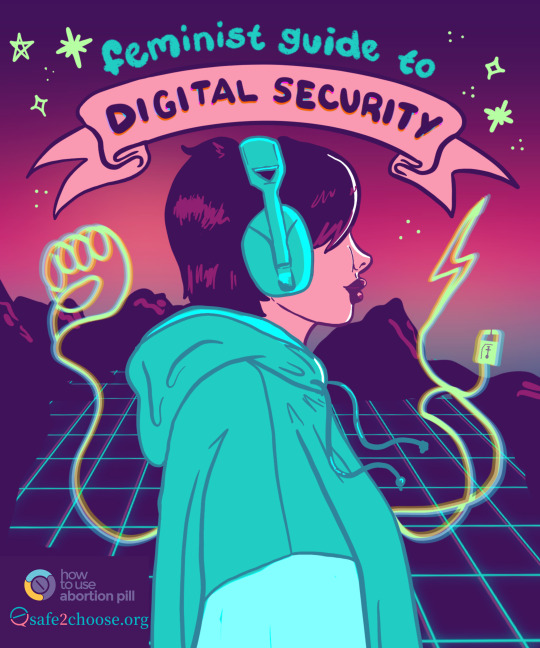
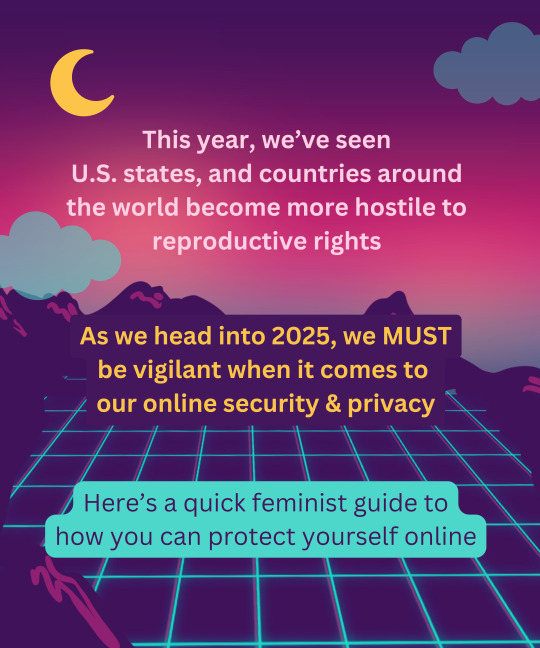
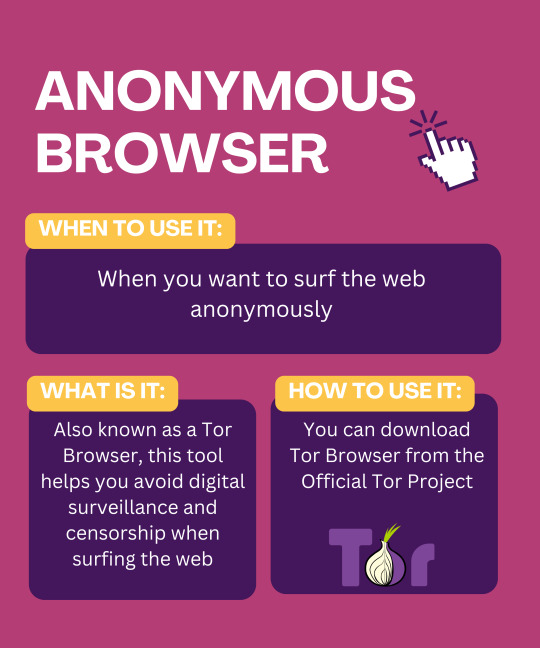
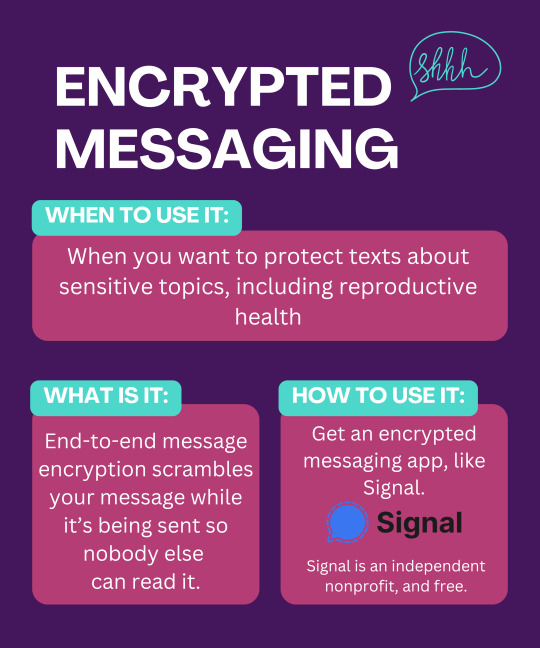
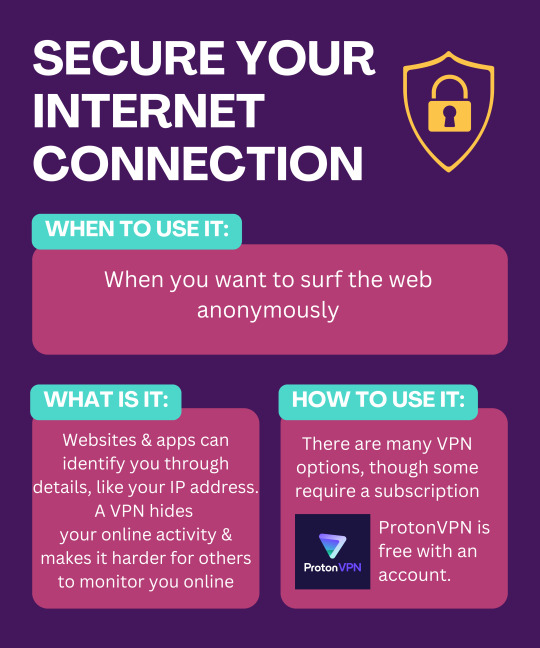

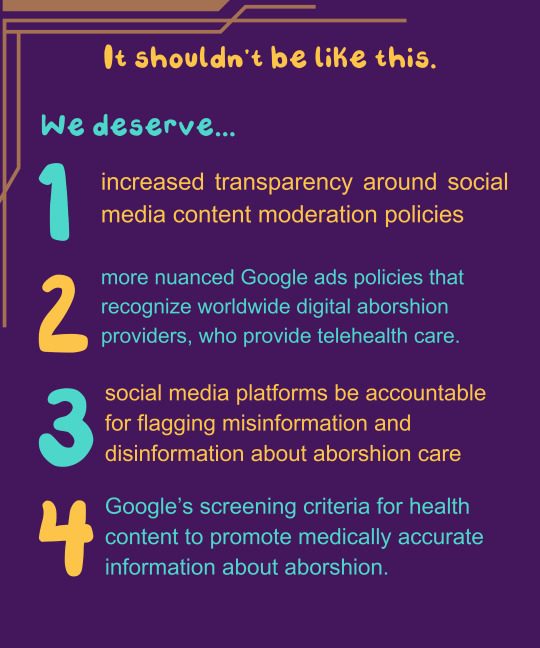
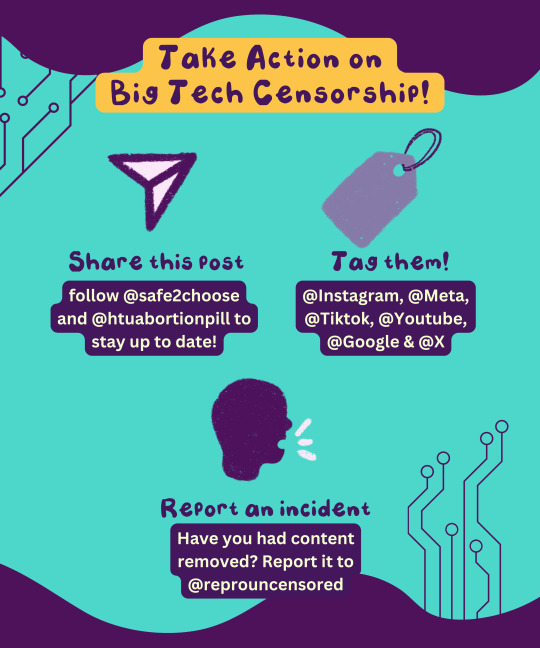
With Trump headed back to office, now is a good time to beef up your digital security.
Here's the Feminist Guide to Digital Security & 4 tips to get started.
Alt-text included on all pieces.
#art#feminism#feminist#digital security#surveillance#cybersecurity#feminist organizing#direct action#social justice#activism#digital activism
1K notes
·
View notes
Note
do you have youtube channel?
technically yes, but I just use it to host unlisted videos for embedding, so there's nothing, like, public on it. :') sorry! I basically don't post anywhere except here and occasionally on pixiv (in case it's not obvious, I suck at social media).
#god help me if i ever have to rely on it as a career because i will immediately die#i like being in one place where people can follow or block as they choose and not have to keep blocking me everywhere#fediverse seems like it would be ideal for that but i haven't seen any that have the thing that i really like about tumblr#which is that tags can work both as a cloud (like if i tag something as 'art' it shows up in the tag feed for 'art)#and also isolated (if you come to my blog and click the 'art' tag you can see only my posts tagged 'art')#(if there's a term for that i do not know it)#i might just be missing if there are any like that though#the people who i tend to look to for this kinda thing are mostly interested in straight-up twitter clones#which is...let's say less than ideal for posting art or organizing anything#so at this point if tumblr goes down i'll probably just take it as a sign to quit social media entirely ( ᐛ )#(my apologies i did not mean for this to turn into a tag novella)
175 notes
·
View notes